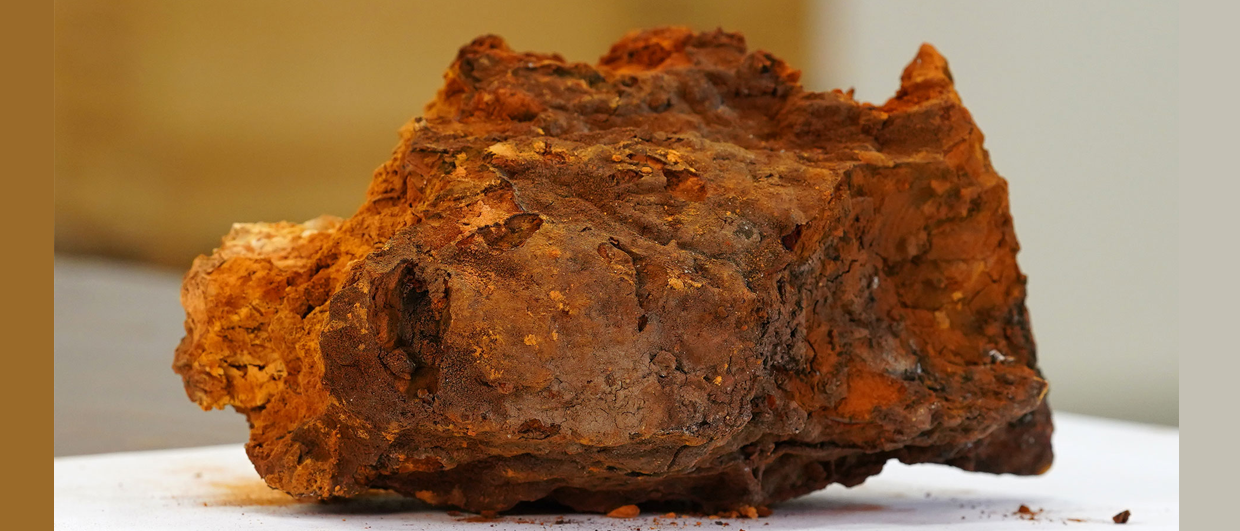“If we look back at the years before the pandemic and the Ukraine invasion, the only countries where we saw a consistent search for gas were the countries around the East Mediterranean and probably in Malaysia with Petronas being quite active on that front. That was kind of the steady state scenario”, says Graeme Bagley from Westwood Global Energy Group.
We spoke to Graeme and his colleague Joe Killen to hear more about the global gas exploration outlook.

Then, the situation changed completely, as we all know. With Europe being shut off from the piped gas supply directly from Russia, there was a sudden peak in interest in LNG as a means to guarantee security of supply. It also sparked the idea that a shortage of gas would soon kick in. But is this sentiment correct?
“If we go back to around 2008 and look at the high-impact wells drilled from that year until now, it turns out that companies have often found gas when they were looking for oil”, says Graeme. “Around 70 percent of the high-impact exploration wells drilled over that time targeted oil specifically, with the remainder of them looking for gas, but the results of those wells show an entirely different picture. It is rather the opposite, with around 60% of resources found being gas and the rest oil.“ This is particularly true for the African margins, both on the eastern and western sides. And what did that mean? It resulted in a lot of gas being stranded!”
We’ve been looking for a lot of oil, but we have found a lot of gas instead
“Based on these observations, the picture of there being a global gas shortage is probably not correct”, explains Graeme. “And, what we are seeing now is a pattern of gas prices going back to pre-covid levels, albeit with a difference between prices in NW Europe and North America. This has alleviated some of the concerns that were raised when price peaked a couple of years ago.”
“In that framework, we still see the East Med as an area where exploration for gas continues to be the main target, with the idea to both supply local markets as well as piping it to northwest Europe. But as said above, there are many other places where there is plenty of gas, gas that is not necessarily seen as an asset.”
“For instance, there is a lot of associated and non-associated gas in the Suriname-Guyana basin, amounting to around 35 Tcf”, says Joe. “Given the very limited local market, the only way to monetise the gas at scale is through LNG, which then competes with the North American and Middle East LNG supplies. That explains why only 200 Bcf of gas has been commissioned until now for gas-to-power projects in Guyana, which is really tiny when you look at the potential”, Joe continues. “In that sense, Guyana is a classic example of the challenges gas developments face, at a time when all the capex goes to oil developments. For now, the produced gas is being re-injected, but at some point this will need to be developed ”
South America
In Brazil, recent exploration more outboard has found more gas, which is often quite high in CO2 as well”, says Graeme. Deep-water gas that is also high in CO2 is not the easiest to develop and will likely be stranded for now.”
“In Colombia, the picture is different, and we have seen some recent dedicated gas exploration there that has resulted in finding gas”, continues Graeme. “The country may also soon see the deepest-ever well spud, at >4,000 m, which is targeting oil but may hit gas. Because there is a local developed market in Colombia, it means that there is a much better outlook for developing gas infrastructure.”
Africa
In West Africa, Senegal and Mauretania are prime examples of countries where gas developments have struggled in recent years. “We have seen GTA being delayed, delayed and delayed, because of a complex development, a limited local market and therefore the need to build an LNG scheme”, says Graeme. “This has resulted in bp announcing a 1.1 billion USD cost impairment in the region because of the delays and cost overruns. Additionally, last year bp walked away from the Yakaar-Teranga discovery in the same area, which also contains gas and was seen as the biggest discovery in the world in 2017. We think that subsurface complexities played a role in this decision too, with low resource density, heavily compartmentalised reservoirs and water interfingering with the gas. The discovery would need more appraisal drilling before this can go anywhere. The last gas discovery was Orca, where the PSC will end fairly soon and if nothing happens, it will then be back into the government’s hands.”
“Angola recently made a move towards a regime that favours the development of gas”, says Graeme. “In the past, gas was held by the government and the IOC’s had no right to develop it. That led to a lot of stranded gas, of which Kwanza is a prime example. These terms have now changed, with the IOC’s being able to market the gas they are finding themselves. This is starting to provide some movement in the country, but let’s be clear that this is all gas development as a by-product of oil rather than dedicated gas exploration.”
The 1 Tcf Kudu discovery in Namibia, which was made in the 1970’s already, is another example of an old stranded gas accumulation that is not even in very deep water. It is an interesting case from a country that is now seen as the new global exploration hotspot. A hotspot for oil, not gas. “But based on the limited data we’ve got, we do think that there are fairly high levels of associated gas in Venus and Graff though”, says Graeme. “As in the Suriname-Guyana Basin, we think that the gas will first be re-injected for reservoir management purposes, deferring a decision on how to produce the gas.” “At the same time, there will probably be a discussion between the government and the operators on this, adds Joe, “as it is likely that the government will prefer the gas to be developed straight away.”
“Recent gas discoveries in South Africa have also resulted in plenty of resources potentially available for a fairly mature market”, says Graeme, “but the competition with the mining communities and the risk of significant redundancies there has put the brakes on further exploration in the offshore. Again, it is a matter of local demand.”
If we move further around the corner of Africa we arrive in Mozambique and Tanzania, again an area with huge stalled gas resources. “In Mozambique alone, there are 15 billion boe of stalled gas resources”, says Joe.. In Tanzania there is another 5 billion boe awaiting development. That’s why any exploration happening in these countries is now targeted to oil, there is no point exploring for gas there.”
In summing up, we see that the sentiment that developed in the aftermath of the Ukraine invasion is not justified by the data. Globally speaking, there is no shortage of gas, and despite the increase in capacity of LNG, gas discoveries are still much more attractive when there is a local market to tap into.
Middle East and India
The picture in the Middle East is different. First of all, it is closer to Europe, with maybe even the potential to pipe gas there, and there is also a better developed local market. “That’s why we see dedicated exploration happening in Oman and the UAE for instance”, says Joe. “At the same time, though the volumes targeted there are not substantial and will not rock the market.”
“Qatar is an interesting example of the global gas race”, adds Graeme. On one hand, the country wants to export as much gas as possible through the production from its North Field and the associated LNG infrastructure. That means that there is a n interesting tensionin the internationally oriented Qatar Energy, which is now involved in international exploration programmes in the East Med, to not to find too much gas abroad, because it may directly compete with their domestically produced LNG.”
“In India, there is quite a push to develop a domestic gas market to supply a massive population with cleaner fuels. For that reason, especially the eastern margin of India has recently seen a push for exploration through a licensing round and we have identified potentially five high-impact wells in the country that specifically target gas resources in the next couple of years”, explains Joe. In that sense, India tops the charts when it comes to gas exploration in the immediate future. “But still, we don’t see India as a country that will soon become a net exporter of gas because of the geological challenges, and the large domestic market.”
“In summing up, we see that the sentiment that developed in the aftermath of the Ukraine invasion is not justified by the data. Globally speaking, there is no shortage of gas, and despite the increase in capacity of LNG, gas discoveries are still much more attractive when there is a local market to tap into. That was the case decades ago, and it still is the case now”, concludes Graeme. “Plus, we forget the pressure on LNG when it comes to the associated emissions; at the end of the day, piped gas is much more environmentally friendly than LNG.”
This is the first part of the cover story published in Issue 2 of this year’s magazine. Two more articles will follow, featuring country reports from Venezuela and Colombia.





